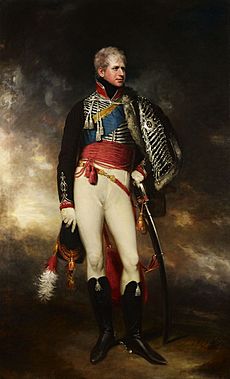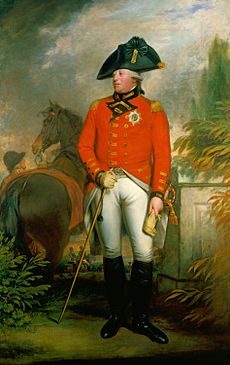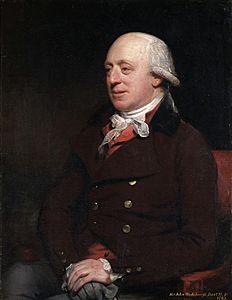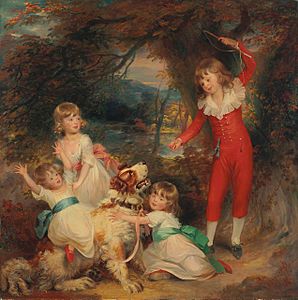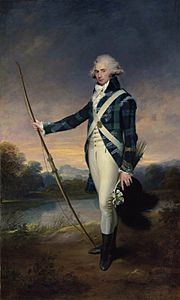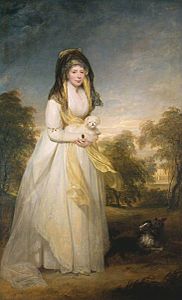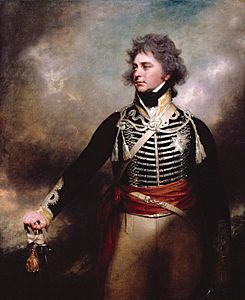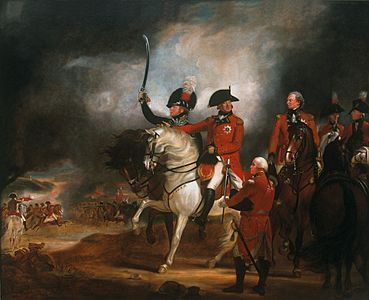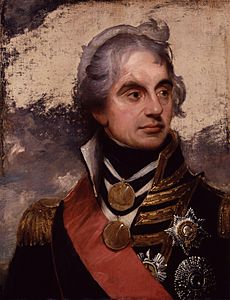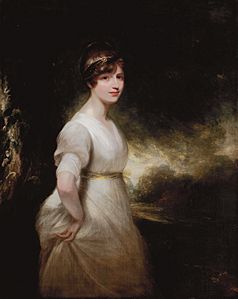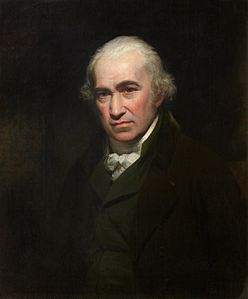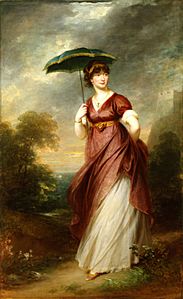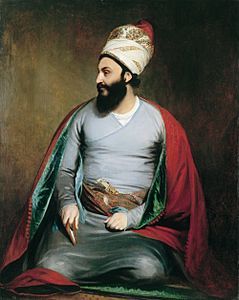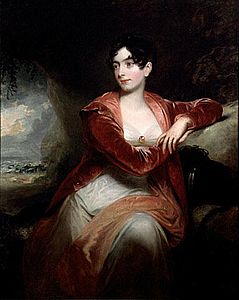William Beechey facts for kids
Quick facts for kids
Sir
William Beechey
RA
|
|
|---|---|

Sir William Beechey, self-portrait, c. 1800
|
|
| Born | 12 December 1753 Burford, Oxfordshire, England, Kingdom of Great Britain
|
| Died | 28 January 1839 (aged 85) London, England, United Kingdom
|
| Nationality | British |
| Known for | Portrait painting |
| Spouse(s) | Mary Ann Jones Anne Phyllis Jessop |
Sir William Beechey (born December 12, 1753 – died January 28, 1839) was a famous British artist. He was known for painting portraits during a time often called the "golden age" of British painting.
Contents
Early Life and Art Dreams
William Beechey was born in Burford, England, in 1753. Sadly, both his parents passed away when he was very young. His uncle, Samuel, then raised him and his brothers and sisters.
His uncle wanted William to become a lawyer, just like him. William even started training for a law career. But William loved art much more than law! He was determined to become a painter instead.
Becoming a Royal Artist
In 1772, William Beechey joined the Royal Academy Schools. This was a special art school where he learned to paint. He showed his paintings at the Academy for the first time in 1776.
At first, he painted smaller pictures of people and groups. In 1782, he moved to Norwich, a city in England. There, he got many jobs painting portraits for important people. He even painted a series of pictures for a famous hall in Norwich.
By 1787, Beechey was back in London. His paintings were becoming very good, following the style of another famous artist, Sir Joshua Reynolds.
Painting for the Royal Family
William Beechey's painting style was perfect for the royal family. In 1793, he was asked to paint a full-length portrait of Queen Charlotte. After this, he became her official portrait painter!
Because of his royal connection, he got many more jobs painting members of the royal family. In 1798, he painted a huge picture called George III and the Prince of Wales Reviewing Troops. This painting showed King George III and the Prince of Wales (who would later become King George IV) on horseback.
The King loved the painting so much that he gave Beechey a special honor: he made him a knight! From then on, William Beechey was known as Sir William Beechey.
Sir William's paintings from this time were very colorful and full of life. He was known for being kind to younger artists, including the famous painter John Constable.
He continued to paint for the royal family for many years. In 1830, he became the main portrait painter for King William IV. Sir William Beechey retired in 1836.
Famous People He Painted
Sir William Beechey had a very long career, lasting for 50 years! He painted many important people of his time. Here are some of them:
| Royalty and Prime Ministers | Political Figures | Other Important People |
|---|---|---|
|
|
|
In a book called Desolation Island by Patrick O'Brian, a character named Captain Jack Aubrey was said to have been painted by Beechey.
His Family
Sir William Beechey was married twice. His first wife was Mary Ann Jones. They had a son named Henry William Beechey, who also became a painter and studied ancient Egypt.
After Mary Ann passed away, William married Anne Phyllis Jessop in 1793. Anne was also a talented artist who painted miniature portraits. They had many children together, and several of them became famous too!
Their children included:
- Frederick William Beechey, a captain in the Royal Navy and a geographer.
- George Duncan Beechey, who became a painter.
- Richard Brydges Beechey, who was both a painter and an admiral in the British navy.
How Much His Paintings Sell For
Sir William Beechey's paintings are very valuable today. For example:
- His portrait of the inventor James Watt sold for over £153,000 in 2003.
- A painting of a Persian diplomat, Mirza Abu'l Hassan Khan, sold for over £181,000 in 2006.
- The Dashwood Children painting sold for $821,000 in 2014!
Where to See His Art
You can find Sir William Beechey's paintings in many famous art museums and collections around the world. These include:
- The Louvre in Paris
- The Smithsonian Institution in the USA
- The Royal Collection in the UK
- The National Portrait Gallery in London
- The Tate in London
- The Metropolitan Museum of Art in New York City
-
Sir John Wodehouse, 1785
-
Paul Sandby, c. 1789
-
George Douglas, 16th Earl of Morton, c. 1790
-
Queen Charlotte, 1796–1812
-
George IV when Prince of Wales, c. 1798
-
James Watt, c. 1802
-
Princess Augusta Sophia, c. 1802


